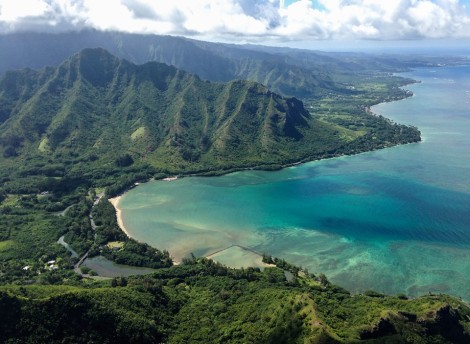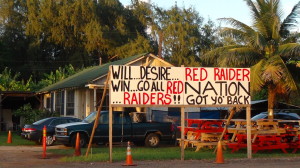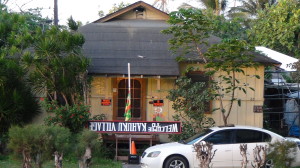‘Keep the Country Country’ Will Protect Kama’aina Families
Many islanders are passionate in the cause to “Keep the Country Country” from Kahaluu to Haleiwa. There are countless good reasons to preserve the rural charm and finite resources — watersheds, waterways, forestry, agriculture, farms, animal husbandry, open space, view planes, cultural values, tourism, and lifestyle — of this region.
Another good reason to keep the country country is to preserve the economic viability and stability of kamaaina families, many of whom have lived in this region for generations.
This precious region lures land investors far and wide. Through their public relations mercenaries, they try to label the “Keep the Country Country” movement as “a vocal minority group of ornery haoles with NIMBY problems” or “people who are shutting the gates after themselves.”
However, the developers’ smear tactics are fast crumbling. The public can now clearly see the negative impacts of big developers playing out in Kahuku.
Today, the Kahuku Plantation Village of about 70 houses is in turmoil. Many are facing eviction from homes they’ve stayed in their entire lives. The sweat and equity of these inter-generational laborers; along with their heritage and roots are tied to this plantation camp.
The entire Honolulu City Council, under the leadership of Chair Ernie Martin and Budget Committee Chair Ann Kobayashi, has allocated sufficient funds for the city to stem massive homelessness and social disruption by acquiring the plantation camp in cooperation with a non-profit group to manage it. But Mayor Kirk Caldwell refuses to respond to the pleas of the plantation residents or the wishes of the city council.
Who will win and who will lose in this high stakes game of profits and survival?
What is occurring at the Kahuku Village Plantation Camp has happened elsewhere and can be quickly summarized in one word — “Gentrification”.
In a nutshell, gentrification is the compressed evolution of massive development in communities that produces “winners” and “losers.”
It’s obvious the “losers” are usually the less affluent.
Gentrification chases the less affluent out of their communities due to the influx of new money and spending power. The less affluent are unable to pay rising rents, property taxes, real estate and the accelerating costs of living. Local businesses may lose their leases under competition or have to keep up with newly built commercial spaces with higher built-in expenses. Development will provide short-term construction jobs to some but what happens next?
Gentrification can alter lifestyle, values, and identity of communities when left unchecked. It inevitably creates disconnect and conflicts in communities. In Hawaii, it’s become a volatile struggle to protecting the local culture and values, environment, finite resources, and a chosen island lifestyle that many hold dear.
Fortunately, Oahu has had a visionary General Plan since the 1970s under the leadership of then Gov. George Ariyoshi. Oahu was divided into eight different geographic areas, delineating different land-use policies that include Primary urban center (Honolulu), Secondary urban center (Kapolei), Urban – fringe (Koolauloa Poko), and Rural designations (Koolau Loa, North Shore, and Waianae).

This Oahu General Plan is a careful compromise to preserve what we hold hear about Hawaii and to address development.
To prevent urban sprawl and inevitable gentrification, decision makers must respect and adhere to the existing Oahu General Plan. There has to be a line of demarcation to safeguard viability and diversity in land-use decisions for Oahu. If we don’t stand for something, we’ll fall for anything.
This Oahu General Plan that protects the Koolau Loa and the North Shore’s charm of old Hawaii, finite resources, food security, watersheds, open space, recreational spaces, view planes, rural lifestyle, and especially the stability of kamaaina residents, must continue to be the basis for objective Big Picture land-use planning. Decision makers must not allow big developers to hijack and amend this document to fit their own agenda.

“Keep the Country Country” — from Kahaluu to Haleiwa — is an integral part of needed diversity and versatility for a thriving and sustainable Oahu. This cause has never sounded so pragmatic and urgent for this iconic region as the first shoe of gentrification drops in Kahuku. “Keep the Country Country” is not about the past; it’s about the future.
About the author:Choon James has been a real estate broker for over twenty years. She’s lived in the North Nhore for over 30 years. She served on the Koolau Loa Sustainable Communities Planning Advisory Committee and hosts “Country Talk Story,” the most-watched public television program on Olelonet in 2012.


